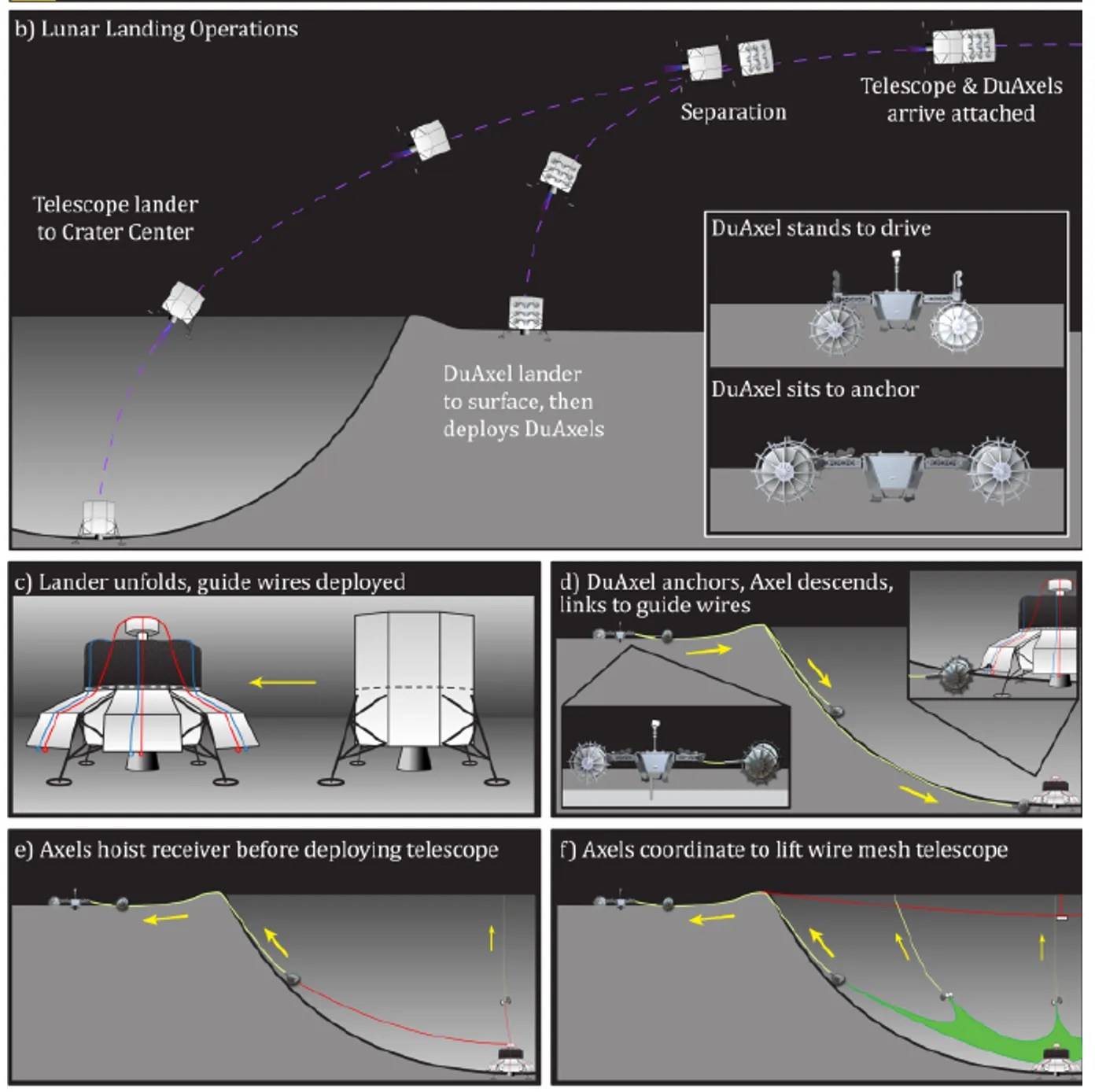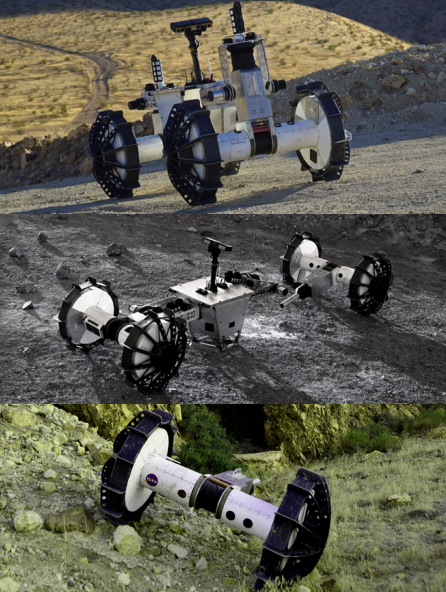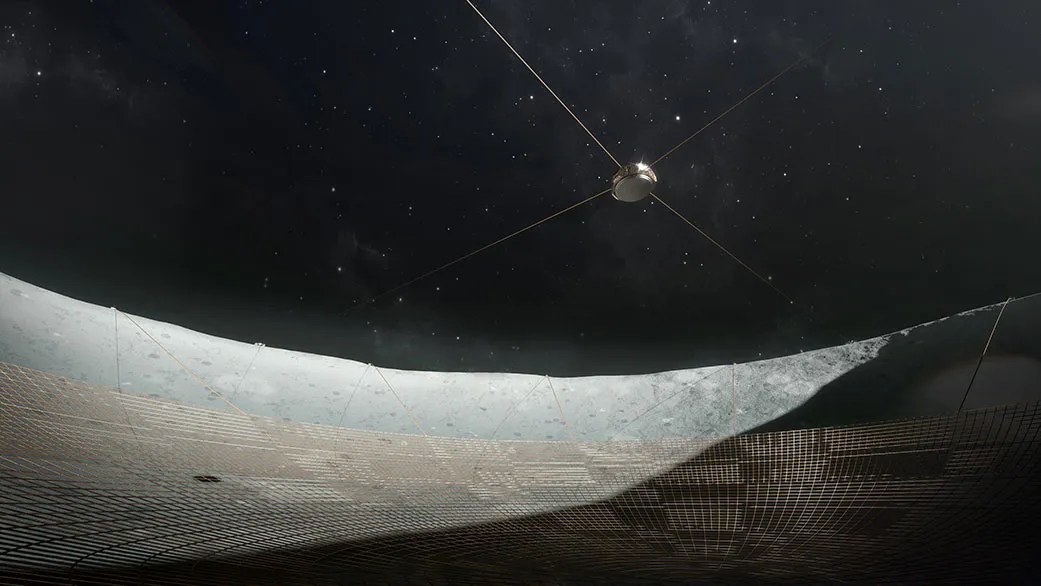When we first developed telescopes, we started using them on the ground. Humanity was yet to master powered flight, you see, to say nothing of going beyond into space. As technology developed, we realized that putting a telescope up on a satellite might be useful, since it would get rid of all that horrible distortion from that pesky old atmosphere. We also developed radio telescopes, when we realized there were electromagnetic signals beyond visible light that were of great interest to us.
Now, NASA’s dreaming even bigger. What if it could build a big radio telescope up on the Moon?
See You On The Dark Side Of The Moon

This concept has been on the cards for some time. NASA has created a plan for the Lunar Crater Radio Telescope, or LRCT. The idea is that NASA would select a large crater on the far side of the moon, roughly 3 km – 5 km in diameter. This natural structure would be used to create a gigantic radio telescope far bigger than could otherwise reasonably be built and deployed by a lunar craft.
The concept is naturally quite complicated, involving multiple robots working together to construct the giant structure. The concept involves effectively building a radio dish over 1 km wide. That’s far in excess of the largest radio telescopes on Earth, like the 500 m FAST in China, and the 305-m-wide destroyed husk that was Arecibo.
To achieve this, one plan would see a lander lofted into the center of the crater, while a secondary lander would land outside the crater, deploying multiple “DuAxle” rovers. The lander in the crater would deploy guide wires for a wire mesh to form the main structure of the dish. The special DuAxle rovers would anchor themselves around the perimeter of the crater, lowering one of their independent axles down towards the center of the crater on a tether. These independent axles would then help grab the guide wires tostretch the wire mesh over the crater. Meanwhile, other rovers would work together to hoist up a receiver to the focal point of the dish formed by the crater’s natural shape.

If it all sounds very complicated, that’s because it is. This method of deployment requires the cooperation of multiple rovers working in sync. Mistakes or mistimed maneuvers could tangle or destroy the mesh quite easily. There are also questions as to command and control. Getting signals to the far side of the Moon isn’t easy; NASA would either need to set up a radio relay or otherwise trust the rovers to do their job entirely autonomously.
The space agency has also explored other ideas for deploying the dish, too. One idea involves having a lander deploy the mesh by flinging it out as it descends into the crater. Alternatively, the lander could settle in the crater and then launch its wire mesh by firing it with projectiles, like some kind of lunar net gun. While these methods cut complexity somewhat, they pose greater challenge in actually anchoring the mesh onto the lunar surface.
However it’s deployed, positioning the telescope on the far side of the Moon is beneficial for doing serious science. The telescope would naturally be shielded from noisy emissions from Earth by the full mass of the Moon itself. Also, by virtue of its location, the telescope would be able to capture frequencies below 30 MHz. These frequencies are normally inaccessible with regards to radio astronomy on Earth, as signals in this spectrum from space tend to bounce off of the ionosphere.

NASA isn’t the only one thinking that the far side of the moon could be a good spot to gaze from. Along with international partners, China has developed its own project to observe the heavens from the far side of the moon, also aimed at investigating the radio spectrum. Much like NASA’s plan, the idea is to get out of the Earth’s ionosphere to listen to low-frequency waves, to help us learn more about the Dark Ages of the universe.
There are a great deal of questions that remain unanswered in radio astronomy, mostly thanks to the limitations of our humble Earth. Getting a radio telescope set up on the other side of the Moon, either in orbit or on the surface, could be a key way to unlock more secrets of the early universe. It will be no small task, but NASA has been pulling off increasingly complicated missions in each subsequent decade. A lunar radio telescope could just be the next amazing feat achieved with top-tier engineering and a fleet of helpful robots.

For now, work remains ongoing. NASA is yet to commit to a mission to deploy the LCRT. It’s still very much in the research phase, having received significant funding to further develop and explore the concept. There are also new challenges emerging as previously radio-quiet parts of the Moon are under threat. Ultimately, don’t expect to see a lunar telescope next year, but expect more movement on these concepts over the next decade.

Dr. Thomas Hughes is a UK-based scientist and science communicator who makes complex topics accessible to readers. His articles explore breakthroughs in various scientific disciplines, from space exploration to cutting-edge research.








